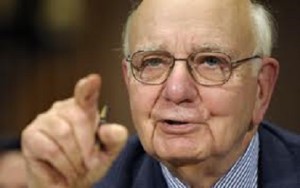“The Volcker Rule is a negative rule, namely, you are guilty until you prove yourself innocent,” said Robert Lendino, Associate General Counsel at BB&T, and the first of two speakers during a webinar hosted by GARP on April 1, 2014. “And the proof must be furnished by the bank’s compliance group.”
The Volcker Rule, drafted in the aftermath of the 2008 financial crisis and approved December 10, 2013, prohibits banking entities from engaging in proprietary trading, and from having ownership in, or acting as sponsors to, certain commodity pools, hedge funds, and private equity funds. [Note: for readability the remainder of this post will use “bank” instead of “banking entity.”] The deadline for conformance is July 2015 with banks “expected to make good faith efforts to conform” by then, he said.
Lendino recommended that the compliance group at each bank should strike a Volcker Task Force comprised of people from legal, risk management, compliance, IT, and HR departments. The IT component is necessary because “someone has to monitor and prove what is being done.” The HR component must show “that employees cannot be incented to take on riskier activities.” The compliance group must, of course, monitor all of this.
“It makes sense to have senior people who form an advisory panel and have other working groups that will get into the nuts and bolts,” he suggested.
The Task Force should draw up an assessment plan, said Lendino. It’s necessary to “identify the activities, and who is doing this activity and what they are doing it with,” he said, referring to underwriting, hedging, market-making, and any of the other activities that might come within the scope of the 900-plus-page law.
The assessment will determine what proprietary trading may be occurring and what funds have the potential to run afoul of the new rule.
“Covered funds” are those funds that could enable a bank to do proprietary trading “under a cover” or indirectly and are thus prohibited by the Volcker Rule in an attempt to stop banks from circumventing the ban on proprietary trading. They include private equity and hedge funds, commodity pools, and foreign covered funds.
Certain covered funds are allowed, such as when the bank is acting as an agent, broker, custodian, or trustee for a customer that is not a covered fund. Lendino provided a helpful list [slide 36 of the downloadable presentation] of funds that are NOT prohibited.
A significant category of instrument that is an allowed covered fund is loan securitization vehicles—“providing they do not include resecuritizations.”
“Federal agencies will evaluate requests for more exclusions” from the definition of covered fund, Lendino noted. For now, there are several entities that “may or may not be” covered funds such as venture capital funds and collateral cash pools. “There is uncertainty about their status,” said Lendino.
There are permitted activities and investments, such as risk-mitigating hedging. [slides 48-49] Investment limitations are set to ownership per-fund of 3 percent or less of the value.
Overall, the Volcker Rule “will make conducting business more burdensome,” said Lendino. “Because of prohibitions of trading activities, [it] could substantially reduce market liquidity.” ª
Click here to view the second presentation on the Volcker Rule.ª
Click here to view the Volcker Rule webinar presentation slides. Robert Lendino’s talk covers all slides except 14 to 34.


